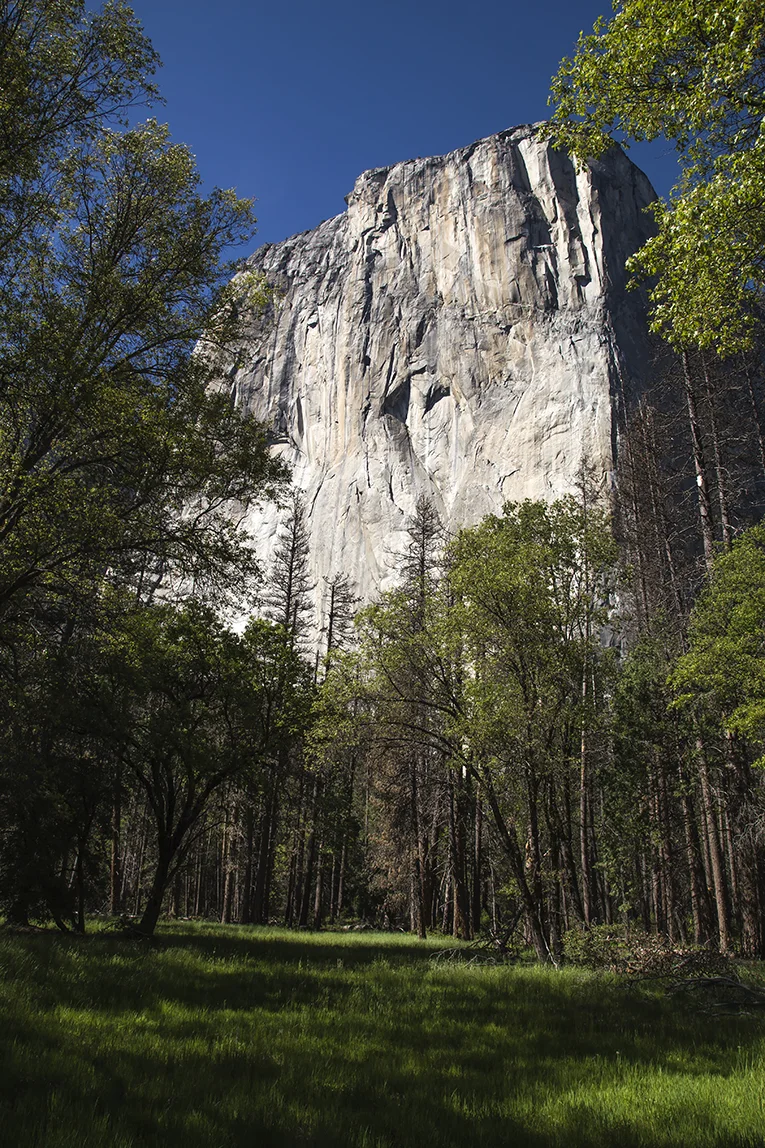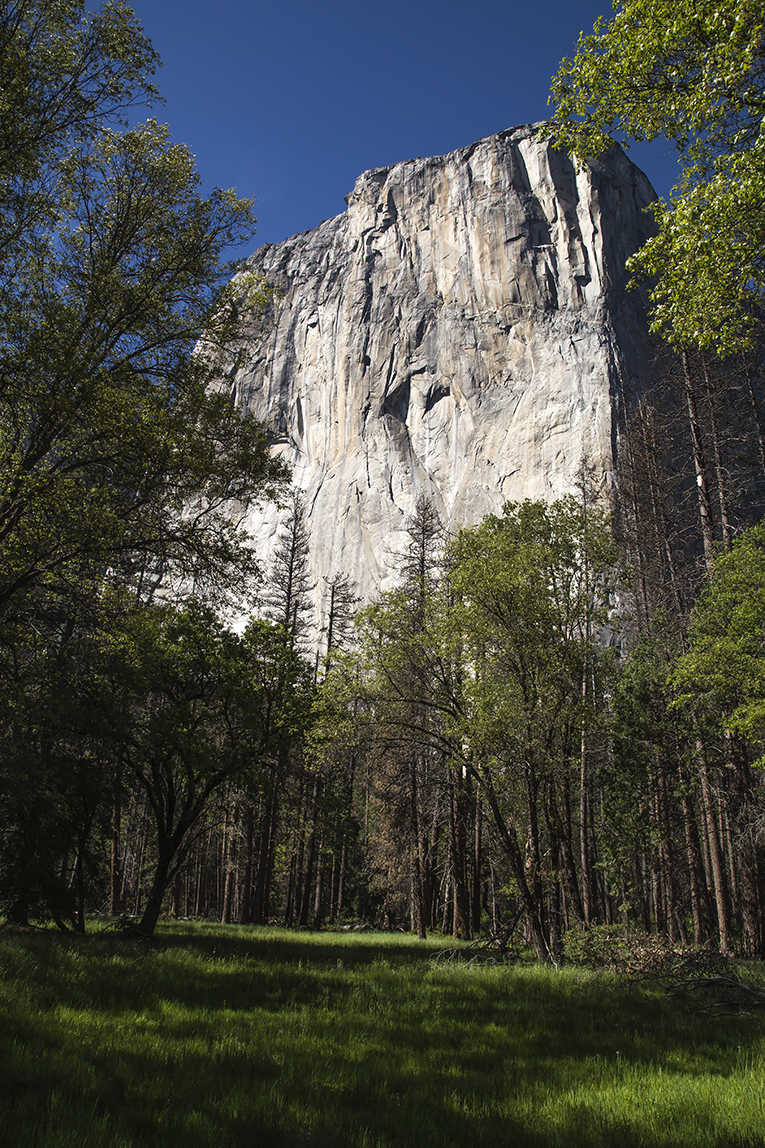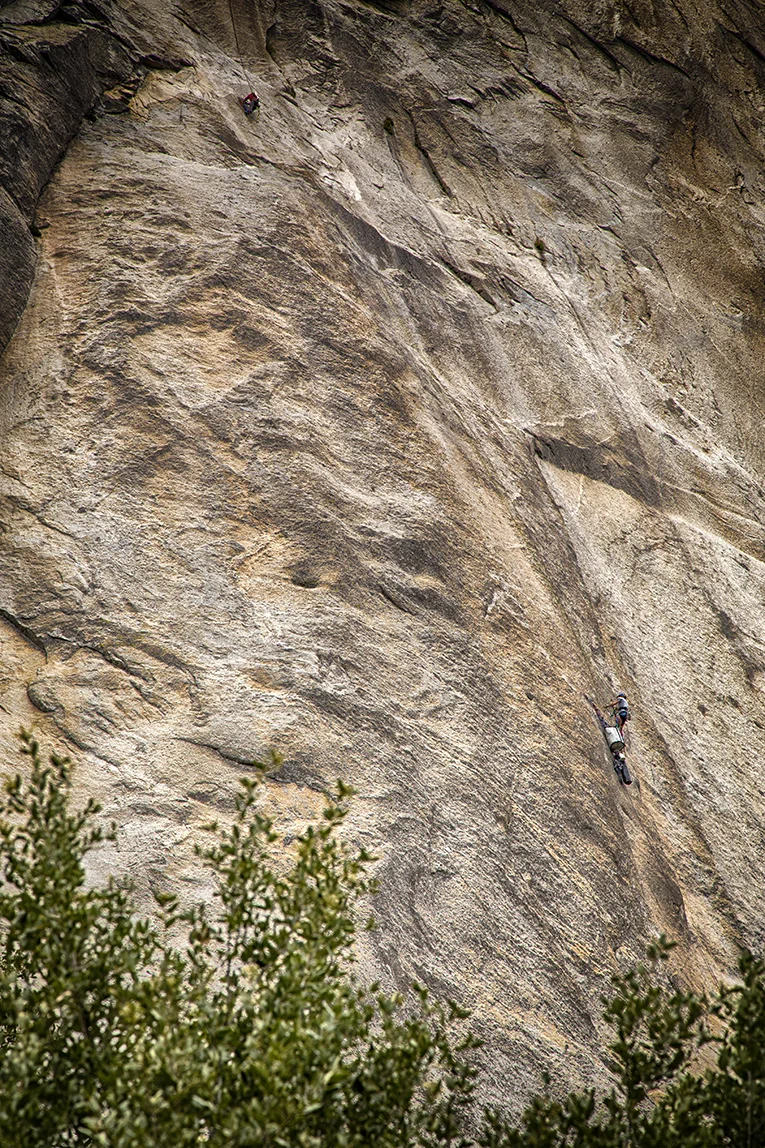My family and I wake up on Monday morning in Yosemite National Park. Today is the day we are going to see El Capitan, one of the most iconic sites in the entire Yosemite Valley. I look out the window to check the lighting conditions for photography. Dark clouds are in abundance, a rather ominous sign. The decision is made-I'm wearing rain gear today.
Maps in hand, sandwiches packed and camera bag on my back, Lisa, Erica, Dave and I head out along one of the trails to El Capitan. Strange as it may seem, California had been in an incredible drought lasting from December of 2011 through April of 2017. We're here in May of 2017, and a lot of this area is flooded, including the trail we've mistakenly embarked upon.
Some of the puddles on this route are quite large. Dave has been nice enough to place logs over many of them that we can step on, keeping us relatively dry. Finally, we make it to the road where El Capitan comes into view. The sheer granite face appears as a giant monolith that spans 3000 feet from base to summit. This sight is incredible!
The name of El Capitan was given by the Mariposa Battalion, a California State Militia that was formed in 1851 to fight the Yosemites and Chowchillas in the Mariposa War. It is felt to mean "the chief" or "rock chief" in the Miwok language of a local Native American tribe.
The geology of "El Cap," as it is referred to by rock climbers and B.A.S.E. jumpers (parachuters from a fixed structure or cliff), can be traced back approximately 100 million years. The composition of this stone edifice is predominantly granite. However, igneous rock is also found in the uppermost portions of this facade.
El Capitan, along with the other rock formations in this enormous valley, were carved by glaciers between 1 and 1.3 million years ago during what is known as the Sherwin Glaciation. In that the granite is relatively free of joints, the rock face has remained resistant to erosion over millennia.
Admittedly, I did not know that El Capitan is considered the standard for big-wall climbing. On this day, however, I got to see first hand what this sport is all about. In front of me are 3 climbers, roped in, scaling the face of this incredible vertical precipice.
There are 2 main faces for climbing as the wall is faced, referred to as the Southwest and the Southeast. The most famous route to the top involves scaling The Nose. From what I can see, this endeavor is not for the faint of heart. It is highly technical, with climbing shops in the valley that will train you with a series of lessons.
It is now afternoon, and the plan is to hike back to the Yosemite Lodge. We get the maps out, and after a lively discussion, make a decision to take a right on the main road and to follow the trail. Unfortunately, as was predicted, it has started to rain. It is way past lunch time, and I'm hungry. I start eating my sandwich in the rain while trudging along the trail. After several miles of this, it is now raining harder, and we realize that we must have taken the wrong turn. We're lost! Our family of intrepid hikers is now worried. A decision is made to stay on the main road to look for help. 6 miles into our trek, now soaked, Lisa spots a car labelled "ranger" and begins to flag him down. This is now our lucky day. He clears out his back seat and drives us 4 miles back to the lodge.
After a hot shower and a nap, we sit in front of the fireplace in the Yosemite Lodge and have a beer. El Cap has clearly been one of the great attractions in the national park. I'll have to say, our hike home was just as memorable, and won't be forgotten any time soon.



